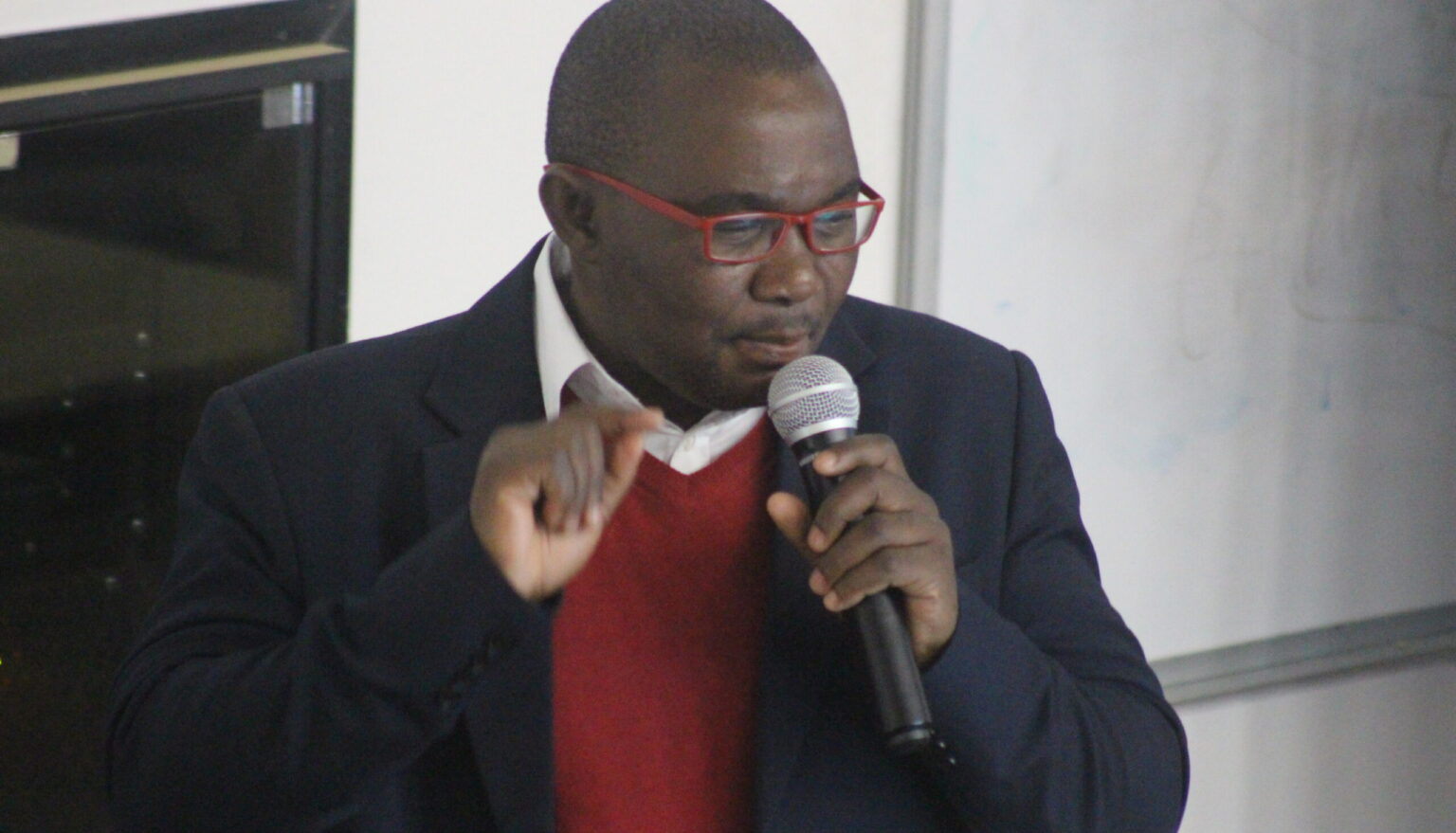By Benny Mojela
Which level of leadership in South Africa is responsible for load shedding and the power crisis? This was the question discussed by journalist and former Eskom spokesperson Sikonathi Mantshantsha, at the teach-in on load shedding and energy organised by the Rhodes University politics department this week.
Mantshantsha, the third speaker at the teach-in, left Eskom on 28 February this year to return to his work as a journalist. South Africans are currently spending about four hours a day without electricity, but there have been times when load shedding was a lot longer. “We are sitting here without electricity. What is the problem, and what is the solution? Apparently, the speaker who was here yesterday said the problem is leadership. He was totally correct. At what level is the question that needs to be answered,” said Mantshantsha.
Mantshantsha said South Africa must build more energy generating infrastructure as a solution. He added that he had been aware for a long time that Eskom’s problems stemmed from disagreements between the Eskom board, government ministers, and engineers. He explained this in response to a question by Journalism student Onele Mcwabeni, who challenged Mantshantsha, saying: “Seeing that you are a person who was once in this situation, you are an accomplice. What was the reason for your exit? Because you are telling us that this is the problem, however not giving us viable solutions. So why did you leave? As well as the rest of the other candidates who were here to lecture us. And then also help us understand the role that you played in maybe alleviating this issue that we are currently facing.”
Mantshatsha responded with a bit of humor, saying, “Let the accomplice answer… As a start, I had never worked for the government before I joined Eskom, and I had never had any ambition to work for the government. By government, I include all the state-owned entities. However, Eskom requested me to come and help communicate with the people of South Africa and tell them exactly what is wrong. What is the problem, and what is Eskom doing about it? Do you know what that problem is? Loadshedding!”
Mantshantsha said he had spent 15 years as a journalist prior to his appointment as Eskom spokesperson demanding answers from people who worked at Eskom. He said he asked, “why are you reducing maintenance? Why are you stealing the money? Why are your children getting so rich? Because you work at Eskom? Because they get contracts that they should have never gotten. Why are you employing this kind of technology? This thing will collapse.”
Mantshatsha recounted a story from July 2014 when Eskom was presenting its annual report. The chairman of Eskom was Zola Tsotsi, and the CEO was Brian Dames. Mantshantsha said the chairman and CEO were on opposite sides of the room, and he approached the CEO and said, “Brian Dames, you guys are cooking up a massive storm of load-shedding. Why are you not maintaining the power stations? Is there a crisis here?” He says the former CEO responded that there was indeed a big problem coming, because Eskom’s engineers were not in agreement with the board and the minister. The engineers wanted to spend more money on maintenance but the politicians did not, Mantshantsha said Dames told him. He then approached Tsotsi who told him there was absolutely no problem and the entity was run very well.
This story, he said, of power tussles and disagreements inside Eskom, illustrated why Eskom was in the poor condition that it is in today.


